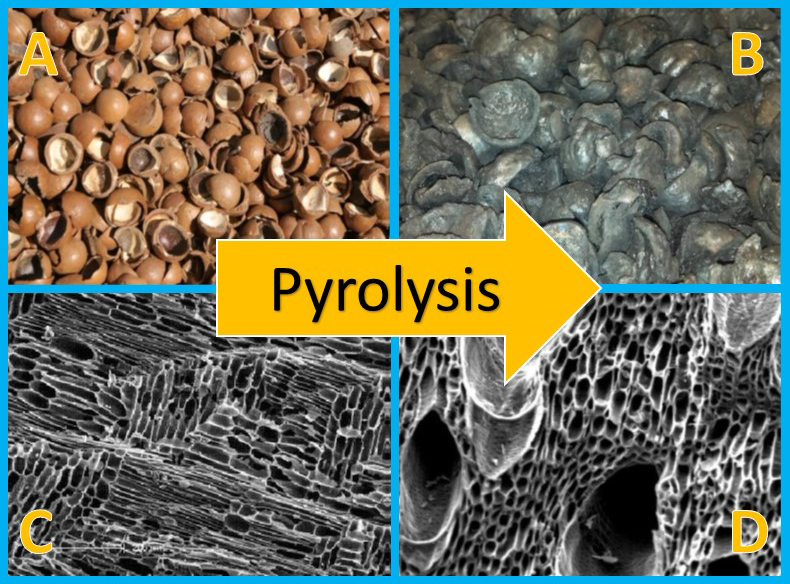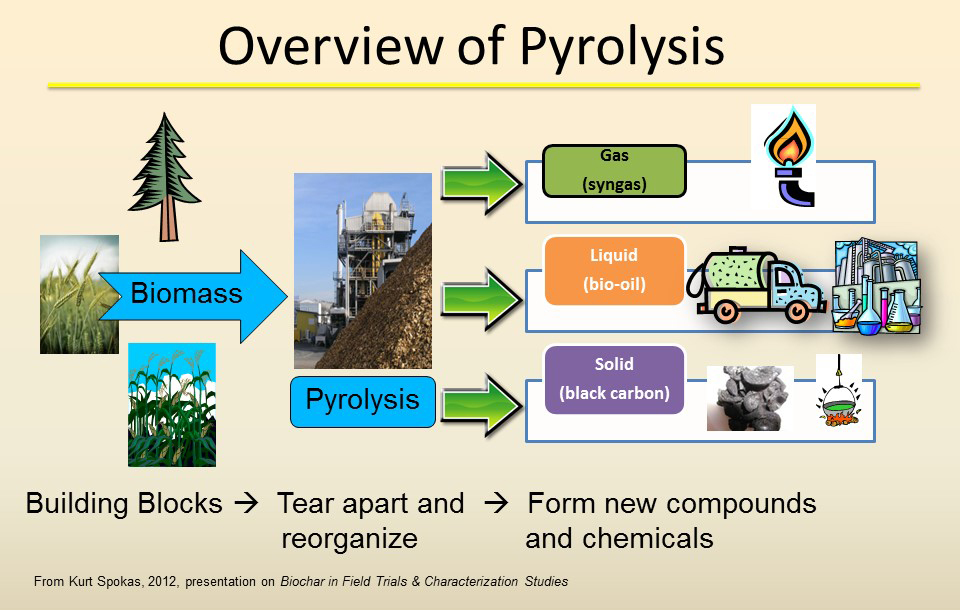Biochar

Images of raw macadamia nut shells (A) which underwent pyrolysis (B). Scanning electron microscope (SEM) images of the original shells (C) and the pyrolyzed shells (D) show their microscopic structure. From these images we can see that the basic structure of the nut shells remain after pyrolysis with the addition of large macropores (seen in D). Images by Kurt Spokas, 2013.
A charcoal-like product produced by the pyrolysis of biomass, biochar is composed largely of carbon. Pyrolysis is a thermochemical conversion process in which biomass is heated at high temperature (usually 450°-750°C) in the absence of oxygen to produce energy products, of which biochar is one (the others being bio-oil and syngas). Biochar retains the original structure of the feedstock but has an increase in porosity.
Biochar use dates back centuries when it was used to enrich Amazonian soils. More about the history of biochar and charcoal use in soils can be found in the webinar "Biochar: The science behind the hype" presented by USDA-ARS Soil Scientist Kurt Spokas.
However, biochar has recently piqued the interest of scientists worldwide due to its potential to improve soil fertility and sequester carbon, as well as being a way to productively utilize waste biomass.
While using biochar in soil may not be a new concept, very little is understood about how it reacts in the environment and more information is needed about its wide variety of potential uses. In recent years, science has worked on a range of applications for biochar (not only in soils, but also in water treatment, energy storage, heavy metal mitigation, animal bedding, and more) and a number of field trials are being conducted around the world. ISTC scientists have studied biochar since 2008 and have focused on its application as a soil amendment, an energy source, a replacement carbon source, and as a method for sequestering carbon.
